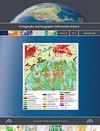The promise of excess mobility analysis: measuring episodic-mobility with geotagged social media data
IF 2.4
3区 地球科学
Q1 GEOGRAPHY
Cartography and Geographic Information Science
Pub Date : 2022-02-07
DOI:10.1080/15230406.2021.2023366
引用次数: 2
Abstract
ABSTRACT Human mobility studies have become increasingly important and diverse in the past decade with the support of social media big data that enables human mobility to be measured in a harmonized and rapid manner. However, what is less explored in the current scholarship is episodic mobility as a special type of human mobility defined as the abnormal mobility triggered by episodic events excess to the normal range of mobility at large. Drawing on a large-scale systematic collection of 1.9 billion geotagged Twitter data from 2017 to 2020, this study contributes to the first empirical study of episodic mobility by producing a daily Twitter census of visitors at the U.S. county level and proposing multiple statistical approaches to identify and quantify episodic mobility. It is followed by four case studies of episodic mobility in U.S. national wide to showcase the great potential of Twitter data and our proposed method to detect episodic mobility subject to episodic events that occur both regularly and sporadically. This study provides new insights on episodic mobility in terms of its conceptual and methodological framework and empirical knowledge, which enriches the current mobility research paradigm.过度流动性分析的前景:用地理标记的社交媒体数据衡量情景流动性
在过去十年中,在社交媒体大数据的支持下,人类流动性研究变得越来越重要和多样化,这使得人类流动性能够以协调和快速的方式进行测量。然而,作为一种特殊类型的人类活动,情景性活动被定义为由超出正常活动范围的情景性事件引发的异常活动,目前学术界对这一问题的探讨较少。本研究基于对2017年至2020年19亿地理标记Twitter数据的大规模系统收集,通过对美国县级访客进行每日Twitter普查,并提出多种统计方法来识别和量化情景流动性,首次对情景流动性进行了实证研究。接下来是美国全国范围内关于情景性流动性的四个案例研究,以展示Twitter数据的巨大潜力,以及我们提出的检测受定期和零星发生的情景性事件影响的情景性流动性的方法。本研究在概念框架、方法框架和实证知识方面为情景性流动研究提供了新的见解,丰富了当前情景性流动研究范式。
本文章由计算机程序翻译,如有差异,请以英文原文为准。
求助全文
约1分钟内获得全文
求助全文
来源期刊
CiteScore
5.20
自引率
20.00%
发文量
23
期刊介绍:
Cartography and Geographic Information Science (CaGIS) is the official publication of the Cartography and Geographic Information Society (CaGIS), a member organization of the American Congress on Surveying and Mapping (ACSM). The Cartography and Geographic Information Society supports research, education, and practices that improve the understanding, creation, analysis, and use of maps and geographic information. The society serves as a forum for the exchange of original concepts, techniques, approaches, and experiences by those who design, implement, and use geospatial technologies through the publication of authoritative articles and international papers.

 求助内容:
求助内容: 应助结果提醒方式:
应助结果提醒方式:


